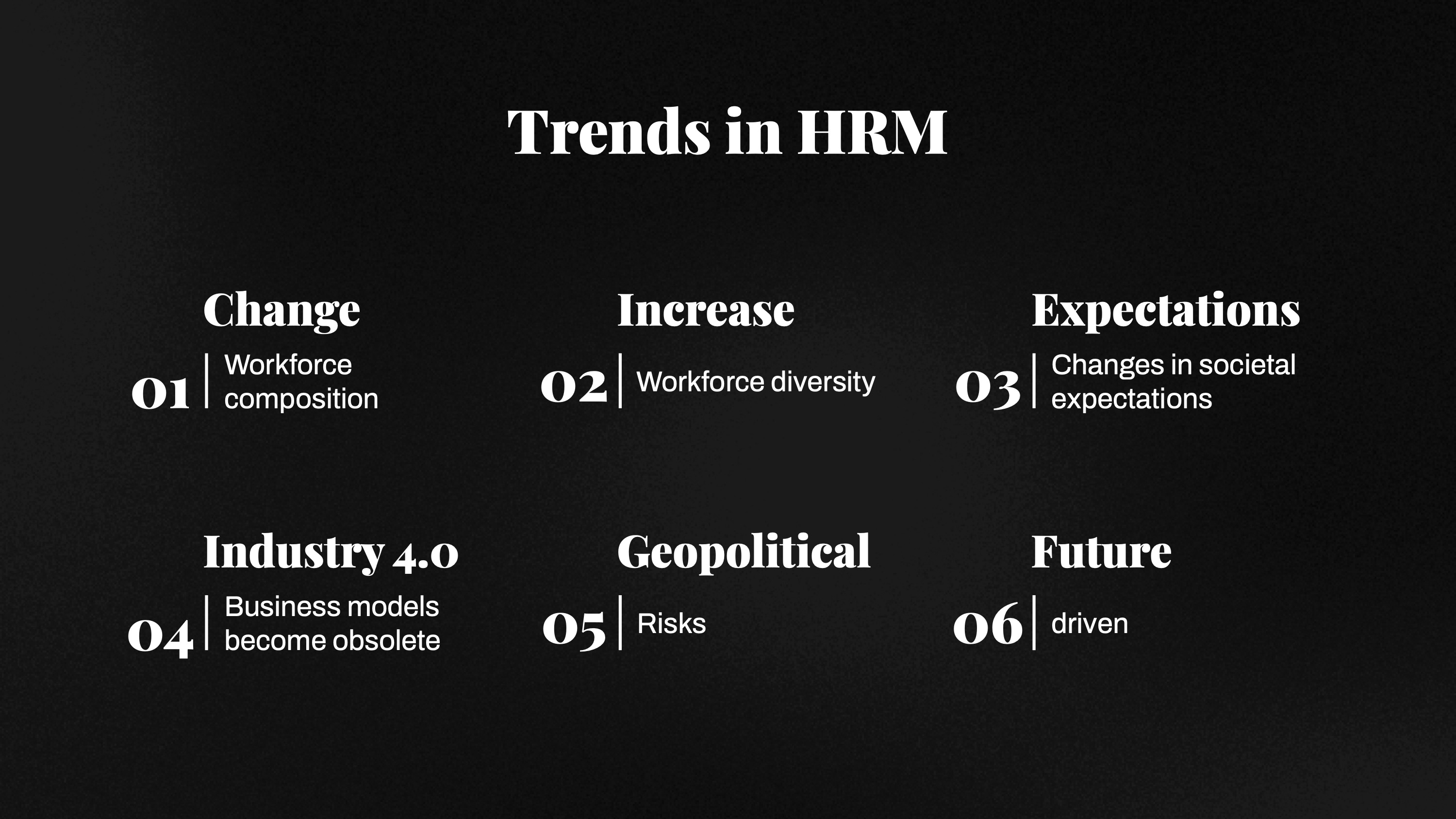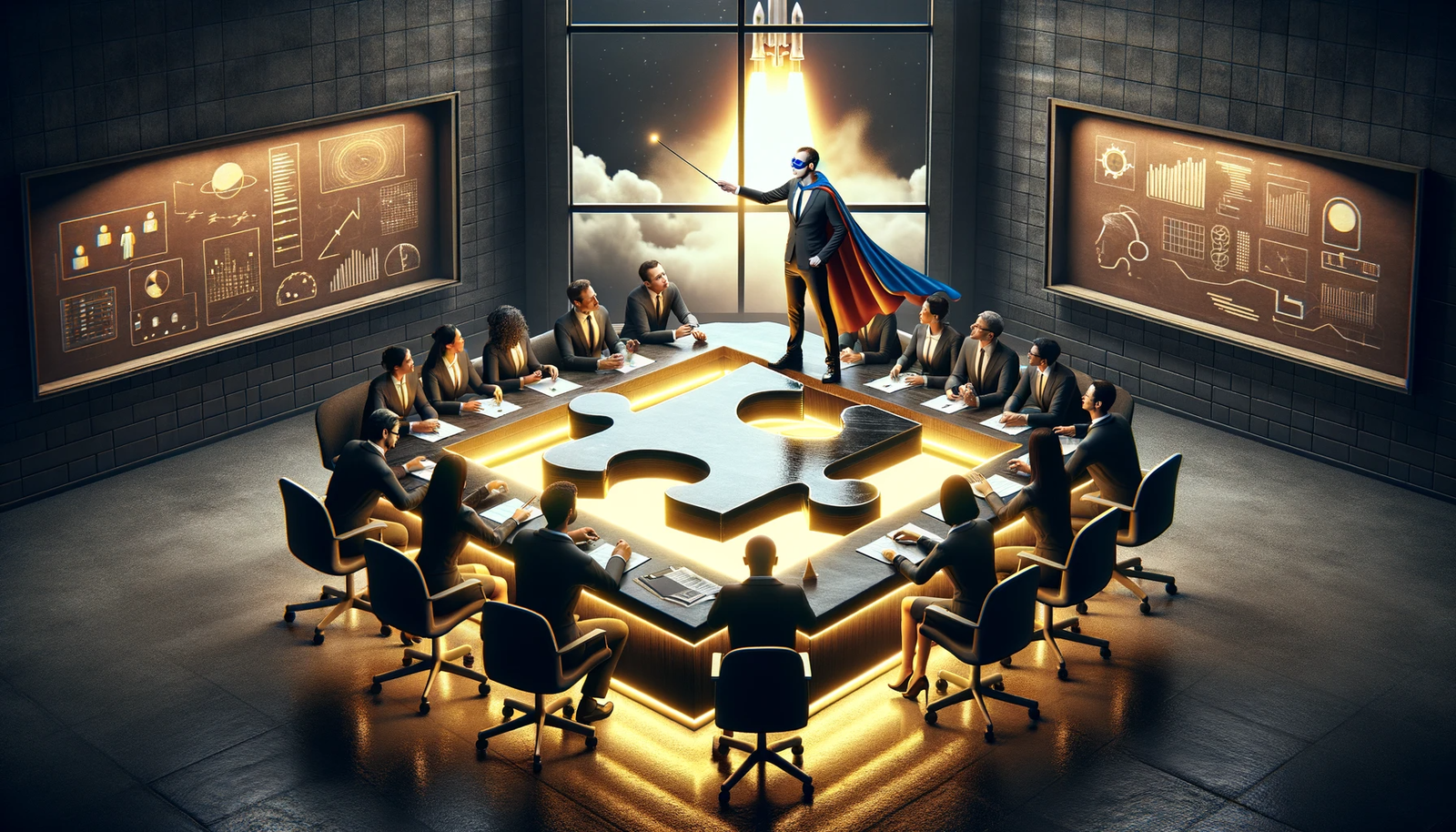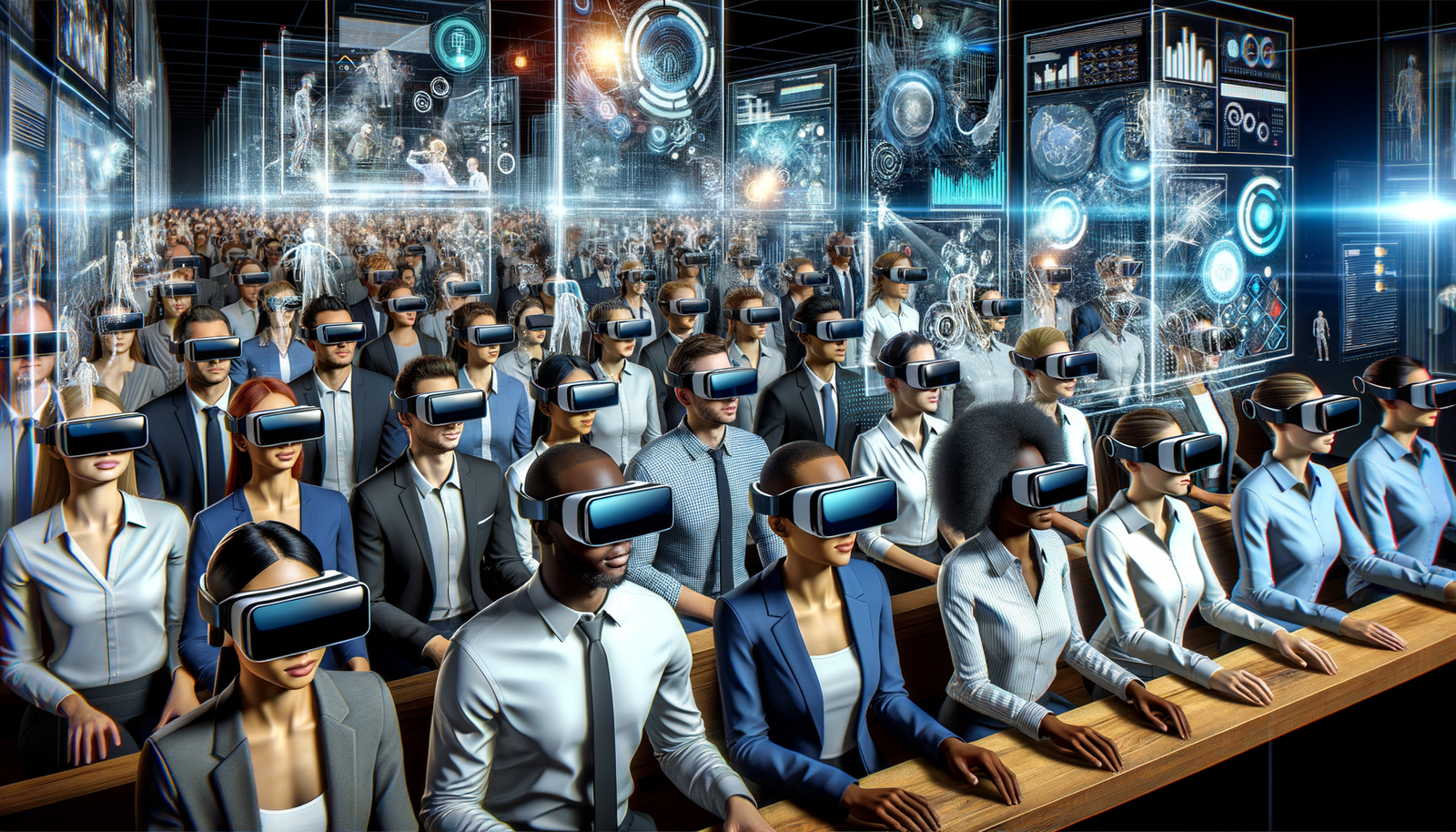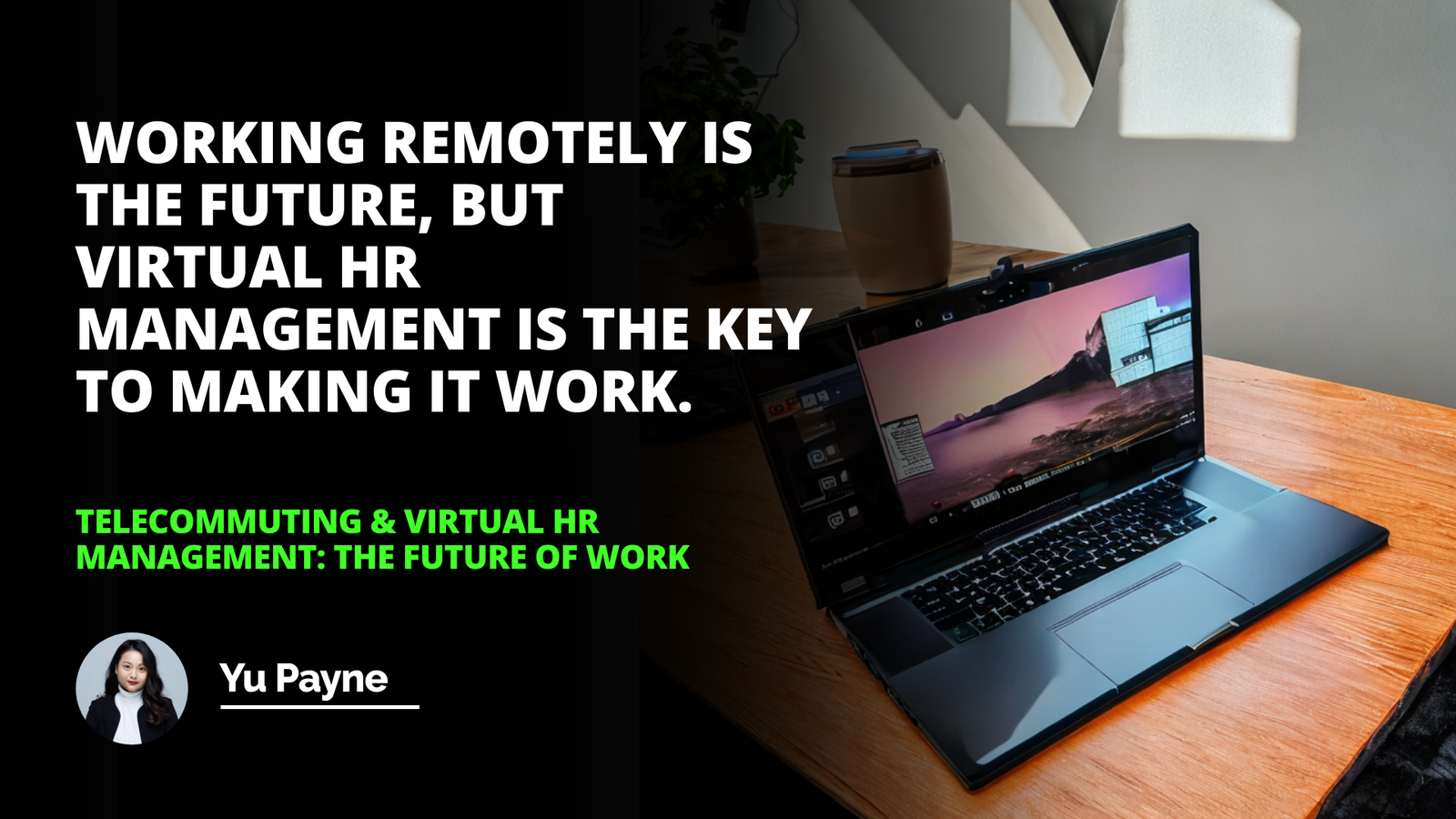
In the ever-evolving landscape of human resource management (HRM), change is not just an occasional ripple but a relentless wave that reshapes the contours of the workforce. As we find ourselves at the intersection of tradition and innovation, it's crucial to acknowledge and understand the forces driving these transformations. From the demographic tapestry of the workforce composition to the intricate patterns of industry 4.0, the world of HRM is not just responding to changes but is actively being redefined by them.
This blog delves deep into the pivotal trends shaping the future of HRM, casting a discerning eye on the dynamic interplay between workforce diversity, societal expectations, industrial evolution, geopolitical intricacies, and the future-driven ethos that collectively carve the path forward for organizations worldwide. Join us as we navigate through these transformative currents, unraveling the complexities and unearthing insights into the future of human resource management.
1. Change in Workforce Composition
The tapestry of the modern workforce is witnessing a transformative change, both in texture and pattern. This evolution is not a mere shift but a profound metamorphosis, driven by multifaceted factors that redefine the very essence of workplace dynamics.
Demographic Shifts: The demographic landscape of the workforce is undergoing significant shifts, with aging populations in certain regions juxtaposed against burgeoning youth demographics in others. This contrast is not just a numerical alteration but brings with it a diverse set of skills, perspectives, and expectations. Organizations are now tasked with harmonizing these diverse age groups, each bringing its unique strengths and challenges to the workplace.
Technological Advancements: The relentless march of technology is reshaping job roles and responsibilities. Automation and artificial intelligence are not just buzzwords but are actively redefining what work is performed, how it's performed, and who performs it. The digital era demands a workforce that is not just tech-savvy but also adaptable to the ever-evolving technological landscape.
Shift in Employment Patterns: The traditional 9-to-5 job is gradually becoming a relic of the past. The rise of the gig economy, remote work, and flexible working arrangements are testaments to the changing paradigm. These trends are not merely shifts in work patterns but are reflective of deeper changes in societal values, lifestyle choices, and economic structures.
Educational Evolution: As industries evolve, so do the skill requirements. There's an increasing emphasis on continuous learning and upskilling. The workforce of today needs not just academic degrees but also the ability to learn, unlearn, and relearn. Lifelong learning is becoming a necessity, and organizations are investing in learning and development more than ever to ensure their workforce is adept and agile.
In this dynamic scenario, HRM professionals are not just witnesses but are at the helm, steering through these changes. They are tasked with understanding these shifts, adapting policies and practices, and ensuring that the organization is not just coping but thriving amidst the changing tides of workforce composition. The challenge is substantial, but so is the opportunity to redefine the future of work and create a workplace that is diverse, inclusive, and resilient.
2. Increase in Workforce Diversity
Diversity in the workforce is no longer a peripheral issue but a central tenet of modern HRM. It's a multifaceted concept that transcends gender, ethnicity, race, age, sexual orientation, and disability, encompassing a wide range of individual differences and perspectives. The increasing diversity is not just a statistic to be noted; it's a dynamic force that is reshaping the workplace culture, enhancing creativity, and driving innovation.
Cultural Mosaic: Today's workforce is a rich cultural mosaic. With globalization bringing the world closer, organizations are becoming melting pots of cultures. This cultural diversity brings in varied perspectives, problem-solving approaches, and ideas, fostering innovation and creativity. However, it also poses the challenge of harmonizing these diverse cultures into a cohesive organizational culture.
Gender Parity: The drive towards gender parity has gained significant momentum. Organizations are actively working towards creating an inclusive environment where gender is not a barrier to career progression. The focus has extended beyond mere representation to ensuring equality in pay, opportunities, and leadership roles.
Inclusivity of Diverse Abilities: Inclusivity goes beyond cultural and gender diversity to encompass people with diverse abilities. Organizations are recognizing the unique talents and perspectives that individuals with disabilities bring to the table. This shift is not just about accessibility but about creating an environment where every individual can thrive and contribute to their fullest potential.
Generational Diversity: With more generations in the workforce than ever before, managing generational diversity has become a critical aspect of HRM. Each generation brings its own set of values, work ethics, and expectations. The challenge for HR professionals is to harmonize these diverse expectations and create a work environment that is respectful, inclusive, and productive.
The increasing diversity in the workforce is not without its challenges. It requires a thoughtful and deliberate approach to manage effectively. Organizations need to foster an inclusive culture where diversity is not just accepted but celebrated. HR professionals play a pivotal role in this transformation. They are the architects of policies and practices that promote inclusivity, equity, and respect. By leveraging the diverse talents and perspectives, organizations can unleash creativity, drive innovation, and gain a competitive edge in the global marketplace. The journey towards a diverse and inclusive workforce is ongoing, and HRM is at the forefront, leading the way.
3. Changes in Societal Expectations
The fabric of societal expectations is continually evolving, casting a significant impact on the realm of human resource management. This evolution is not just a reflection of changing mindsets but also a catalyst that propels organizations to reassess and realign their strategies, policies, and practices.
Work-Life Balance: The traditional hard lines between work and life are blurring. There's a growing emphasis on work-life balance, with employees expecting their employers to recognize and support their life outside work. This shift is not just about flexible working hours or remote work options; it's about creating an organizational culture that values and respects an individual's personal time and commitments.
Corporate Social Responsibility (CSR): Today's workforce is increasingly conscientious about the ethical stance and social responsibility of their employers. Employees expect their organizations to not just be profit-driven but also to demonstrate a commitment to social and environmental causes. CSR initiatives are not just a moral imperative but also a strategic necessity to attract and retain top talent who prioritize organizational values aligning with their own.
Mental Health and Wellbeing: There's a growing recognition of the importance of mental health and overall wellbeing in the workplace. Societal expectations have shifted from viewing jobs as merely a source of income to considering them a significant part of one's overall life experience. Employees expect their employers to provide a supportive environment that acknowledges and addresses mental health and promotes holistic wellbeing.
Continuous Learning and Growth: The fast-paced and ever-changing business landscape has instilled a culture of continuous learning and development. Employees expect organizations to provide opportunities for growth, skill development, and career progression. The focus has shifted from job security to career agility, with a significant emphasis on acquiring new skills and competencies that keep pace with industry changes.
Navigating these changing societal expectations is a complex yet critical task for HR professionals. It requires a delicate balance between aligning organizational objectives with employee expectations and societal norms. HRM must act as a bridge, fostering communication and understanding between the organization and its employees. By doing so, they not only enhance employee engagement and satisfaction but also position the organization as a responsive, responsible, and respected entity in the broader societal context. The changing societal expectations present both a challenge and an opportunity - to build a more empathetic, responsive, and sustainable organizational culture.
4. Industry 4.0: Obsolescence of Traditional Business Models
The advent of Industry 4.0 marks a revolutionary era characterized by cyber-physical systems, the Internet of Things (IoT), and the Internet of Systems. This technological revolution is not just reshaping manufacturing sectors but also significantly impacting HRM by rendering traditional business models obsolete.
Integration of Advanced Technologies: Industry 4.0 introduces advanced technologies such as AI, robotics, big data, and machine learning into the workplace. This integration demands a workforce that is not only tech-savvy but also adaptable to rapidly changing technological environments. HR professionals are tasked with the dual challenge of ensuring smooth integration of these technologies and managing the workforce transition through upskilling and reskilling initiatives.
Changing Nature of Jobs: As automation and AI take over routine and repetitive tasks, the nature of jobs is shifting towards more complex and creative work. This shift demands a reevaluation of job roles, responsibilities, and performance metrics. HRM is at the forefront, redesigning job descriptions, redefining performance indicators, and realigning employee expectations with the new realities of the workplace.
Demand for New Skill Sets: Industry 4.0 is not just about technological skills; it also emphasizes the need for soft skills such as problem-solving, critical thinking, creativity, and emotional intelligence. These skills are crucial in managing complex systems and making informed decisions in a technology-driven workplace. HR professionals are increasingly focusing on holistic skill development, ensuring that the workforce is well-equipped to navigate the challenges of Industry 4.0.
Data-Driven Decision Making: The proliferation of data in Industry 4.0 enables data-driven decision-making. HRM is leveraging big data and analytics to make informed decisions about talent acquisition, employee engagement, performance management, and retention strategies. This shift towards data-driven HRM requires a thorough understanding of data analytics tools and techniques and a strategic approach to integrating data insights into HR practices.
The transition to Industry 4.0 is a monumental shift, requiring a proactive and forward-thinking approach from HRM. It's about embracing change, fostering innovation, and preparing the workforce for the future. The obsolescence of traditional business models is not just a challenge; it's an opportunity to reinvent, reimagine, and rebuild the future of work. HR professionals are the architects of this transformation, playing a pivotal role in steering organizations through the tides of change and positioning them for success in the new industrial era.
5. Navigating Geopolitical Risks
In an era where global interconnectivity has reached unprecedented levels, geopolitical risks loom large over the corporate horizon. The intricate web of international relations, policy shifts, and economic fluctuations has a profound impact on organizational strategies and operations, including human resource management.
Impact of Global Policies and Regulations: Changes in international policies and trade regulations can significantly affect the way organizations operate. HR professionals must be adept at navigating these changes, ensuring compliance with international laws, and adapting workforce management strategies to align with global standards and practices.
Cultural and Political Sensitivities: As organizations expand their operations across borders, understanding and respecting cultural and political nuances become paramount. HRM plays a critical role in fostering a culturally sensitive work environment, promoting diversity, and ensuring that employees are well-versed in the cultural and political contexts of their international counterparts.
Risk Mitigation and Crisis Management: Geopolitical uncertainties can lead to crises that may disrupt business operations. HR professionals must be equipped with robust risk mitigation and crisis management strategies. This involves scenario planning, maintaining open and transparent communication channels, and ensuring that the organization has the agility to respond effectively to unforeseen events.
Talent Mobility and Global Workforce Management: Geopolitical risks can influence workforce mobility, immigration policies, and the availability of talent. HR professionals must navigate these complexities by developing global talent management strategies, ensuring that the right talent is in the right place at the right time, and adapting to the regulatory constraints of different regions.
Navigating geopolitical risks requires HR professionals to be not just administrators but strategic partners who can anticipate, understand, and respond to the global dynamics that impact the organization. It demands a keen understanding of international affairs, a strategic approach to risk management, and an inclusive perspective on workforce diversity and mobility. By effectively managing geopolitical risks, HRM can safeguard the organization against potential disruptions, ensure regulatory compliance, and maintain a resilient and adaptable workforce ready to face the challenges of the global corporate landscape.
6. Future-Driven HRM
In a world characterized by rapid and relentless change, the future of human resource management is not just about adapting to the present but proactively shaping the future. Future-driven HRM is about anticipating the trends, preparing for the unforeseen, and being a step ahead in the evolutionary journey of the workforce and workplace.
Embracing Technological Innovations: The future of HRM is intricately tied to technological advancements. From AI and machine learning to blockchain and beyond, embracing these technologies is pivotal. Future-driven HRM involves leveraging these tools not just for operational efficiency but also for strategic decision-making, talent management, and enhancing employee experience.
Fostering a Culture of Innovation and Agility: The future workplace demands a culture that is not just receptive to change but thrives on it. HR professionals play a crucial role in nurturing this culture, promoting innovation, and fostering agility. This involves creating an environment where creativity is encouraged, failure is not frowned upon but seen as a stepping stone to success, and continuous learning is a part of the organizational DNA.
Strategic Workforce Planning: Future-driven HRM requires a forward-looking approach to workforce planning. This involves understanding the future skill requirements, identifying potential skill gaps, and developing strategic talent acquisition and development plans. It's about building a workforce that is not just competent for today but is prepared to take on the challenges of tomorrow.
Sustainability and Responsibility: The future of HRM is increasingly intertwined with sustainability and corporate social responsibility. Future-driven HRM recognizes the importance of building sustainable business practices, promoting ethical behavior, and ensuring that the organization's growth is aligned with societal and environmental well-being.
Employee Wellbeing and Mental Health: Recognizing the critical importance of employee wellbeing and mental health is a hallmark of future-driven HRM. It's about acknowledging that employees are the most valuable asset and investing in their holistic wellbeing is not just a moral responsibility but a strategic imperative.
The journey towards future-driven HRM is a continuous one, marked by a commitment to innovation, strategic foresight, and a deep understanding of the human element in the corporate equation. It's about being visionary, adaptable, and resilient – ready to navigate the uncertainties of the future and harness the opportunities it presents. HR professionals, in this context, are not just managers or administrators; they are visionaries, strategists, and leaders shaping the future of the workplace.
As we navigate through the intricate labyrinth of trends and transformations in the realm of Human Resource Management, it becomes evident that the role of HR professionals is more crucial and dynamic than ever before. From embracing the mosaic of workforce diversity to steering through the waves of technological disruptions, and from mitigating geopolitical uncertainties to building a future-driven organizational culture, the journey of HRM is one of continuous evolution and strategic foresight.
In this ever-evolving landscape, the need for continuous learning, upskilling, and staying ahead of the curve cannot be overstated. It is here that our comprehensive HR courses and online learning platforms come into play, offering you the tools, insights, and knowledge to not just navigate but thrive in the complexities of modern HRM. Our courses are meticulously designed to cater to the needs of aspiring HR professionals and seasoned practitioners alike, offering a blend of theoretical knowledge and practical insights.
We invite you to embark on this transformative learning journey with us. Join our HR courses and online learning community to unlock your potential, stay ahead of the trends, and shape the future of your organization. Embrace the opportunity to learn from industry experts, network with peers, and pave your path to becoming an HR leader of tomorrow. The future of HRM is bright and full of possibilities, and with the right tools and knowledge, you can be at the forefront of this exciting journey. Join us, and let's shape the future of HRM together.


